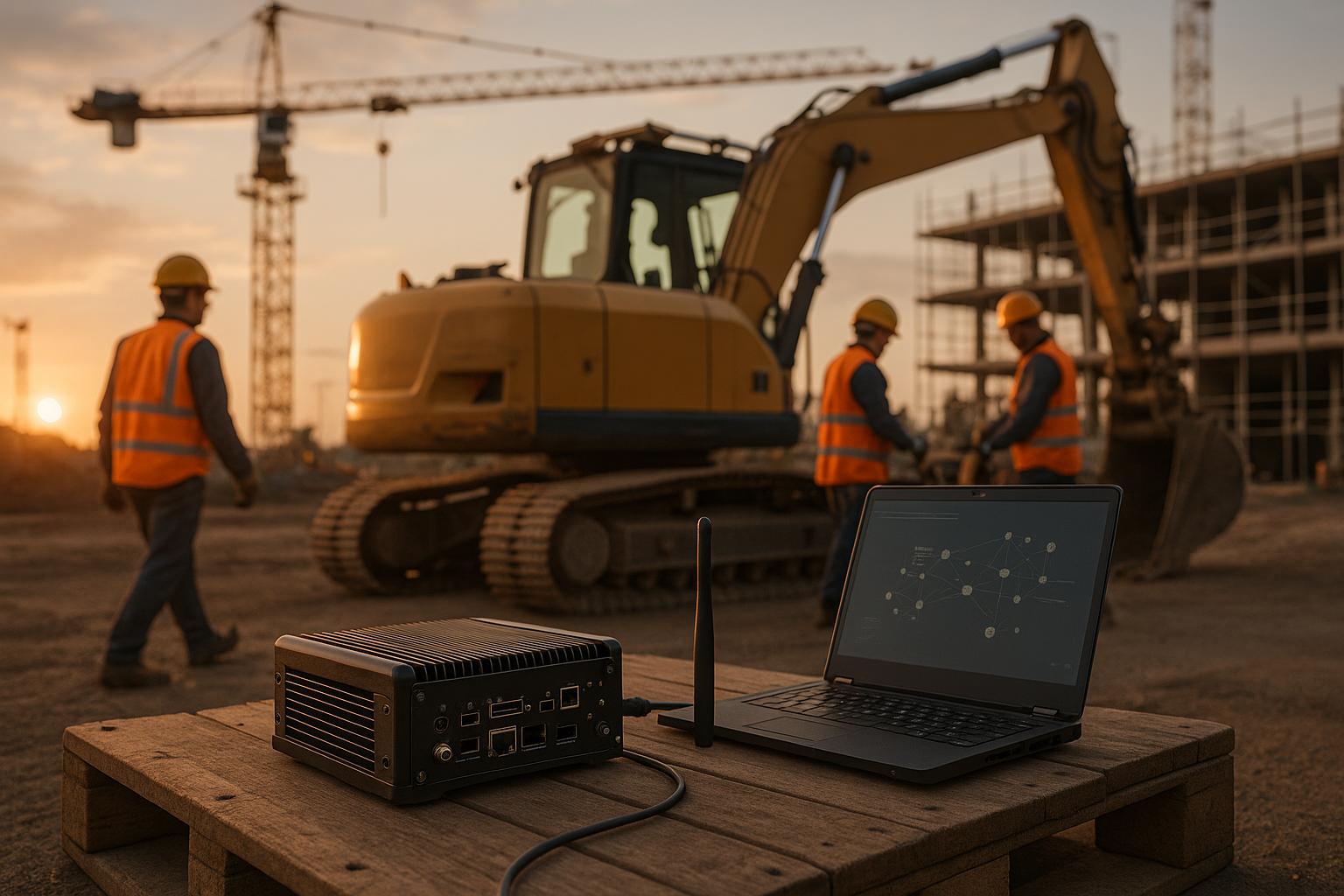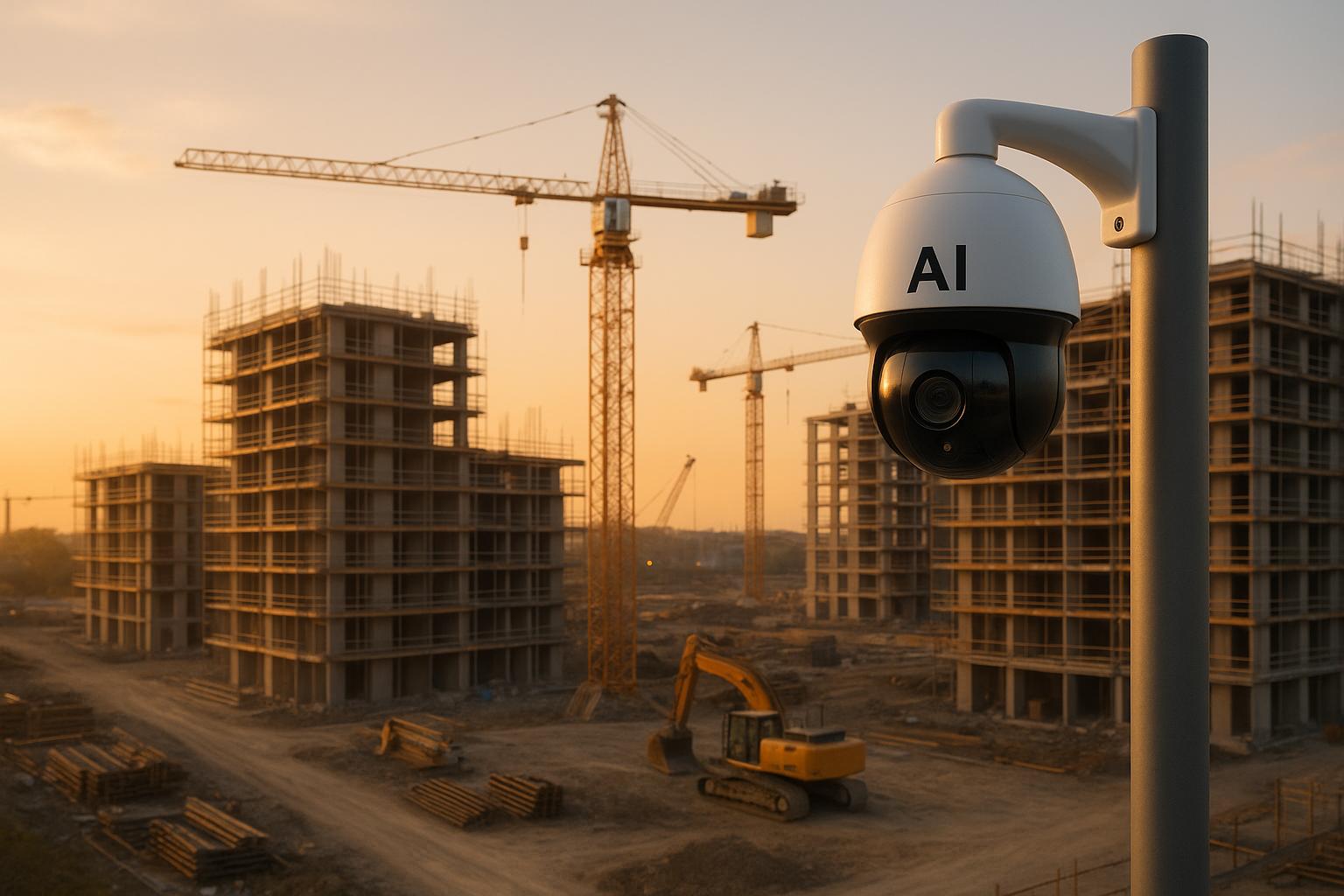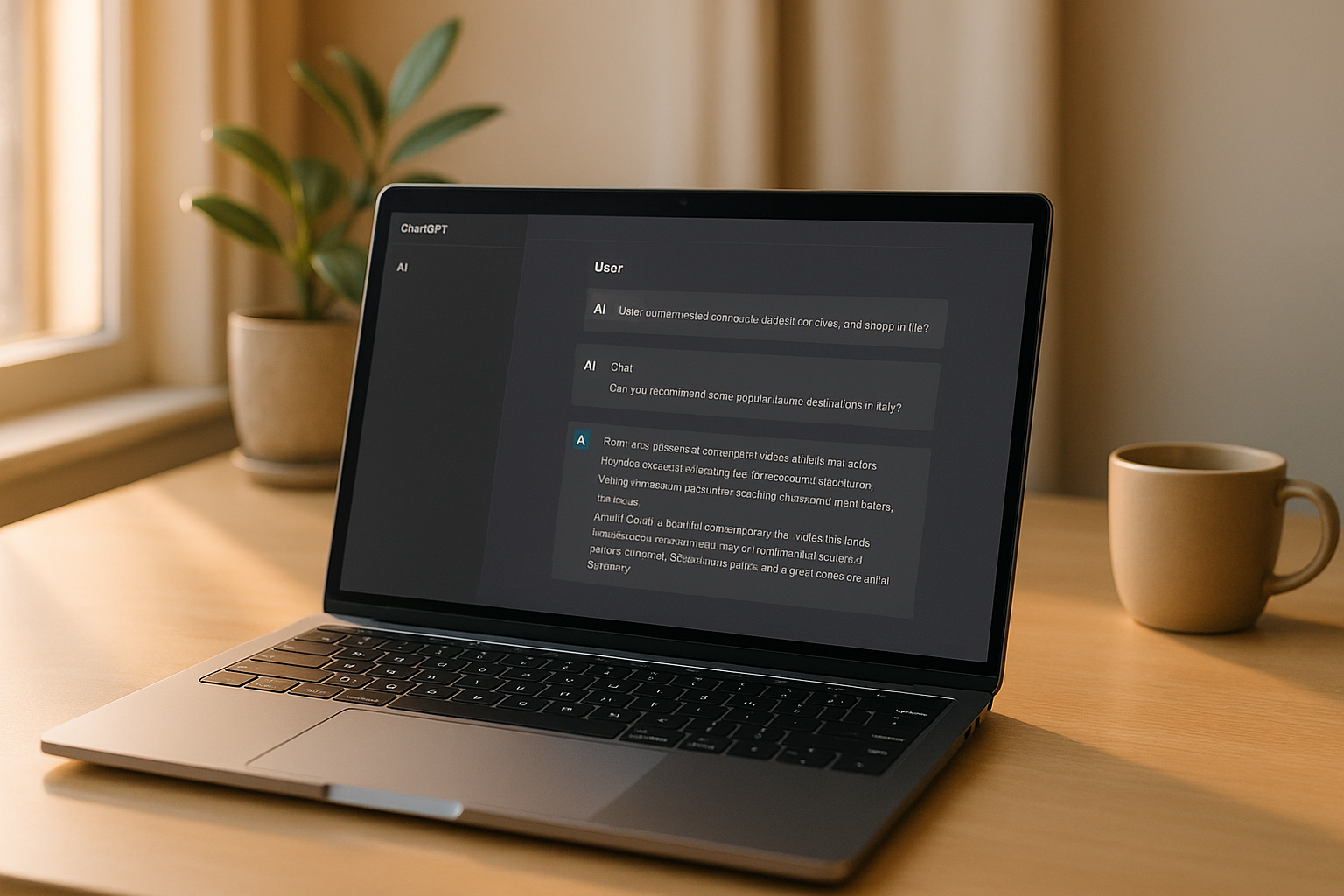Edge Computing in Construction: When Cloud Latency Kills User Experience
Taher Pardawala October 10, 2025
Cloud latency can disrupt construction workflows and compromise safety. Edge computing solves this by processing data locally, ensuring faster responses, improved safety systems, and better equipment monitoring.
Key takeaways:
- Why latency matters: Delays in cloud data processing can impact safety alerts, equipment monitoring, and project management.
- How edge computing helps: By processing data on-site, it reduces delays, keeps operations running smoothly, and minimizes reliance on unreliable internet connections.
- Real-world benefits: Faster maintenance alerts, immediate safety notifications, and real-time project updates improve efficiency and reduce risks.
Edge computing is transforming construction by addressing latency challenges, enhancing safety, and improving productivity. Here’s how it works and why it matters for modern construction projects.
Cloud Latency Problems in Construction
What Cloud Latency Means
Cloud latency refers to the time it takes for data to travel from a device to a remote server and back again. While this delay is typically measured in milliseconds, it can have a significant impact on construction sites. Here’s why: devices like sensors, tablets, and monitoring systems rely on real-time data processing to ensure safety and efficiency. Even a slight delay can mean the difference between preventing an accident and reacting to one after it happens.
This problem becomes even more pronounced in remote or early-phase construction sites, where connectivity is often unreliable [1].
The effects of latency ripple through various aspects of on-site operations.
Common Latency Problems on Construction Sites
Safety systems are one of the most critical areas affected. Wearable devices, designed to alert supervisors instantly when a worker falls or enters a dangerous zone, lose their edge if latency causes delays. A delayed alert turns proactive safety measures into reactive ones, increasing risks [2].
Equipment monitoring also takes a hit. IoT sensors installed on heavy machinery like excavators and cranes track performance metrics, temperature, and mechanical stress in real time [1]. Latency can delay the processing of this data, making it harder to catch early signs of equipment failure, which could lead to costly breakdowns or accidents.
Field apps used for tasks like status updates, inspections, or accessing blueprints become less effective when synchronization lags. This slows down workflows, disrupts decision-making, and impacts overall productivity [2].
Quality control processes are another casualty of latency issues. Sensors monitoring crucial factors like concrete temperature, structural stress, or environmental conditions rely on real-time data to ensure standards are met. Any delay in processing this information can compromise the integrity of the work being done.
EConoM – Edge Computing, AI & 5G for Construction Sites
Why Edge Computing Works Better for Construction
Edge computing brings data processing closer to where it’s generated, cutting down delays and boosting efficiency. By analyzing information locally, construction teams can make decisions faster and with greater accuracy. This shift translates to quicker, safer, and more cost-efficient operations at job sites.
Faster Response Times for Site Operations
One of the standout advantages of edge computing is its ability to drastically improve response times for critical tasks on-site. Instead of sending data to distant servers for processing, edge computing handles it locally. This means data only travels a short distance, enabling real-time analytics. Sensors on equipment, environmental monitors, and tracking devices feed directly into on-site systems, giving managers the ability to act without delay. For example, supervisors can assess conditions and make adjustments immediately, ensuring operations stay on track. The result? Rapid, near-instant responses that keep everything running smoothly [3][4].
Better Safety and Monitoring Systems
Safety gets a significant boost with edge computing. By processing data locally, hazards can be detected and addressed in real time. This is especially critical in the fast-paced and ever-changing environment of a construction site. Immediate access to analytics means potential dangers can be mitigated before they escalate, protecting workers and maintaining a safe work environment [3].
Real Uses of Edge Computing in Construction
Edge computing is reshaping construction workflows by processing data locally, which empowers teams to act quickly and efficiently on high-stakes projects with tight deadlines.
Live Equipment Tracking and Maintenance
With edge computing, construction teams can monitor expensive machinery in real time, minimizing costly downtime. Modern equipment is often equipped with IoT sensors that track metrics like engine temperature, hydraulic pressure, fuel levels, and operational hours. By processing this data locally, edge systems can quickly identify issues. For instance, if an excavator’s hydraulic system starts showing irregularities, the system can send immediate alerts.
These instant alerts are critical for predictive maintenance. For example, abnormal vibrations in a bulldozer can trigger warnings, allowing teams to address the problem before it leads to a breakdown. Additionally, GPS tracking, powered by edge processing, offers real-time insights into equipment location, usage patterns, and operator behavior. This also bolsters security – if machinery moves outside designated zones, theft alerts can be triggered instantly.
This level of oversight doesn’t just protect equipment; it also contributes to a safer work environment.
Site Safety Monitoring with Local Data Processing
Edge computing enhances on-site safety by leveraging wearable devices and environmental sensors that process data locally. Smart hard hats and safety vests equipped with sensors can monitor workers’ vital signs, detect falls, and assess exposure to hazardous conditions. By processing this data on-site, alerts for issues like heat stress or falls can be sent immediately, ensuring swift responses.
Environmental monitoring also benefits from edge computing. Sensors that track air quality, noise levels, and weather conditions provide up-to-date information, enabling site managers to take fast action – such as evacuating areas or pausing operations – if conditions become unsafe.
Proximity sensors integrated into collision avoidance systems add another layer of safety. These sensors can issue visual and audio warnings when workers approach hazardous zones near heavy equipment. Meanwhile, computer vision systems monitor site activity, identifying missing safety gear, unsafe behaviors, or risks like unstable structures or blocked exits.
But edge computing isn’t just about safety; it’s also a powerful tool for improving quality and project coordination.
Quality Control and Project Management
Edge computing enables real-time quality control by analyzing construction data on-site. Digital cameras and sensors can capture critical information, such as measurements during concrete pours or material specifications, and process it instantly to ensure everything meets required standards.
Computer vision, powered by edge systems, automates quality inspections. For example, cameras can detect air bubbles or improper mixing during concrete pours, allowing teams to address these issues right away. This immediate feedback helps maintain high-quality work throughout the project.
Project management also sees major benefits. Drones capturing site activity can feed data directly into edge systems, which update project timelines and resource allocations in real time. This allows managers to make quick decisions about labor, material deliveries, or schedule adjustments.
Edge computing also optimizes resource use by tracking material consumption, worker productivity, and equipment utilization as it happens. When integrated with Building Information Modeling (BIM), edge systems can verify designs instantly. If sensors detect deviations from the digital model, alerts are triggered, enabling crews to address issues before they escalate.
Additionally, edge computing simplifies documentation. By continuously capturing and processing data on completed tasks, materials used, and quality metrics, it ensures project records are always up to date and readily accessible.
sbb-itb-51b9a02
How to Add Edge Computing to Construction Workflows
If latency issues are slowing down your construction workflows, edge computing can be a game-changer. By shifting from cloud-dependent systems to edge-enabled setups, you can process data locally, reduce delays, and improve overall efficiency. But making this transition requires careful planning, the right tools, and strong security measures.
Check Your Latency and Operation Needs
Start by conducting a latency audit across your construction sites. Measure response times for critical applications like safety alerts, equipment monitoring systems, and project management tools. Pay close attention to areas where delays could lead to safety risks or higher costs.
Identify high-priority operations that would benefit most from edge computing. For example, safety monitoring systems that rely on real-time data – such as fall detection or hazardous material alerts – require faster processing than cloud-based systems can often provide. Local data processing through edge computing can eliminate these delays.
Evaluate your current infrastructure for connectivity gaps, bandwidth issues, and latency challenges. Many construction sites struggle with unreliable internet connections, which makes cloud-dependent systems less practical.
Also, calculate the costs tied to equipment downtime, safety incidents, and delays caused by slow data processing. These numbers can help justify the investment in edge computing and guide you on which systems should be upgraded first.
Once you’ve mapped out your needs, you’ll be ready to select the right edge computing tools.
Pick the Right Edge Computing Tools and Setup
Choose industrial-grade edge devices that can handle the tough conditions of construction sites. For basic tasks like monitoring, lightweight edge computers may suffice. However, more demanding applications – such as computer vision for quality control – will require hardware with greater processing power and advanced graphical capabilities.
Look for devices that support multiple connection types, such as Wi-Fi, cellular, and ethernet, to ensure reliable communication even when one network fails. Some edge devices also offer failover capabilities, automatically switching between networks to maintain connectivity.
Design your network architecture to balance local processing and cloud synchronization. Edge devices should handle real-time data processing on-site while syncing critical data to central systems during off-peak hours or when bandwidth allows.
Consider modular systems that let you scale up processing power and storage as your needs grow. These flexible setups can save costs and make it easier to expand operations across multiple sites.
Keep Data Secure and Plan for Growth
Protect sensitive project data with device-level encryption on all edge devices. Use secure communication protocols like VPNs or encrypted tunnels and implement certificate-based authentication to block unauthorized access.
Install edge devices in tamper-resistant enclosures and place them in secure locations that balance connectivity with restricted access. Some devices also include tamper detection features that can alert security teams if someone tries to interfere with the hardware.
For long-term growth, design scalable systems that can support multiple job sites. Standardize your edge computing platforms and configurations to simplify training and maintenance. Document the architecture and create deployment templates to make rolling out new sites easier.
Develop clear data governance policies to manage how long data stays on edge devices and when it moves to central storage. Automated data lifecycle management can transfer older, less critical data to the cloud while keeping recent, frequently accessed information local. And don’t forget to create backup and disaster recovery plans – edge devices are often exposed to risks like construction damage or severe weather.
Case Studies: How Edge Computing Changed Construction Projects
Edge computing has proven to be a game-changer in construction, reducing downtime, enhancing safety, and improving project management. By processing data locally instead of relying on cloud systems, it eliminates delays caused by data transmission and connectivity issues. Let’s dive into some real-world examples that highlight its impact.
Cutting Downtime with Predictive Maintenance
Equipment breakdowns can bring construction projects to a halt, piling on costs and delays. Traditional cloud-based systems often miss early warning signs due to data transmission lags. On a major infrastructure project in Texas, edge devices were used to monitor heavy machinery in real time. These devices tracked critical parameters like engine temperature, hydraulic pressure, and vibration patterns, flagging potential issues before they turned into failures. This approach allowed maintenance teams to act proactively, scheduling repairs ahead of time and avoiding costly emergency fixes. Even in areas with unreliable internet, the edge devices kept monitoring consistently and sent instant alerts, ensuring uninterrupted operation.
Improving Safety with Instant Alerts
Construction sites demand quick responses to safety hazards, something traditional cloud systems can struggle to provide. In a high-rise project in Chicago, edge computing transformed safety monitoring. The system combined wearable sensors with computer vision cameras to track unsafe behaviors, equipment issues, and environmental risks across multiple levels of the site. By processing data locally, it drastically cut alert response times. For instance, when a crane malfunction or unstable scaffolding was detected, the system immediately notified workers in danger zones, allowing them to evacuate before an incident occurred. Because the system operated independently of internet connectivity, safety monitoring remained active at all times, significantly improving compliance and reducing accidents.
Better Project Management with Local Analytics
Timely, accurate data is critical for effective project management, from resource allocation to scheduling and quality control. On a large commercial development in Denver, edge analytics were deployed across the sprawling construction site. The system collected and processed data from cameras, material sensors, and productivity monitors right on-site. This gave managers instant access to real-time dashboards, helping them quickly address productivity slowdowns or resource shortages. During concrete pours, for example, the system monitored environmental factors like temperature and humidity, alerting teams when conditions were unsuitable for curing. These timely insights helped prevent material failures, keeping the project on track and within budget. Additionally, the locally processed data proved invaluable during client meetings and inspections, providing up-to-the-minute progress updates even in areas with poor connectivity.
Conclusion: Using Edge Computing to Eliminate Latency
Edge computing offers a practical solution to the cloud latency challenges often faced on U.S. construction sites. By processing data locally instead of relying on distant cloud servers, it enables the near-instant responsiveness that today’s construction projects require.
Traditional cloud processing can’t always keep pace with the demands of modern operations. Edge computing steps in to bridge the gap, supporting applications like predictive maintenance, safety alert systems, and real-time project analytics. These capabilities help teams transition from responding to problems after they occur to addressing them before they escalate, saving both time and money.
The advantages are clear: quicker response times, enhanced safety, reduced bandwidth costs, and dependable performance – even in hard-to-reach locations.
AlterSquare specializes in delivering customized edge computing solutions tailored specifically for construction environments. Our team combines technical expertise with on-the-ground experience, ensuring that your operations see real, measurable improvements.
Don’t let cloud latency slow down your projects. Edge computing provides the speed, reliability, and efficiency that modern construction demands. Ready to take the next step? Get in touch with AlterSquare’s product engineering team to implement edge computing solutions that boost productivity and keep your projects on track.
FAQs
How does edge computing improve safety on construction sites compared to traditional cloud systems?
Edge computing plays a critical role in improving safety on construction sites by enabling real-time hazard detection and immediate response. For example, it can use on-site video analytics to identify unsafe behaviors, like workers not wearing personal protective equipment (PPE), and send instant alerts. By processing data locally instead of relying on remote cloud servers, edge computing ensures quicker reactions and more effective safety management right where it matters.
It also allows for continuous monitoring of equipment and environmental factors. If safety limits – such as temperature or pressure thresholds – are breached, the system can automatically sound alarms or even shut down machinery to prevent accidents. Unlike traditional cloud-based systems, edge computing reduces delays and keeps operations running smoothly, even in areas with weak internet connections. This makes it a dependable tool for ensuring safety and meeting compliance standards on-site.
What are the key steps to start using edge computing in construction workflows?
To bring edge computing into construction workflows, begin by setting up on-site devices such as sensors, cameras, and machinery controllers. These tools enable real-time data processing right where the action happens. Then, take a close look at your current infrastructure to confirm compatibility and create a custom implementation plan that emphasizes network security and reliable system performance.
Additionally, focus on building localized processing systems and defining clear data management practices. These measures can help optimize operations, cut down on delays, and enhance the efficiency of construction applications directly at the site.
Can edge computing work effectively at remote construction sites with unreliable internet?
Absolutely, edge computing is a game-changer for remote construction sites, even when internet access is spotty or unreliable. By handling data processing directly at or near the source, it minimizes the need for constant internet connectivity. This means real-time data analysis and decision-making can continue uninterrupted, even if the network goes down.
What’s more, edge computing is built to thrive in environments with inconsistent internet access. This makes it a perfect fit for construction sites located far from urban infrastructure. Its ability to keep essential operations running smoothly ensures tasks stay on track, boosting on-site efficiency and helping projects move forward without unnecessary delays.








Leave a Reply